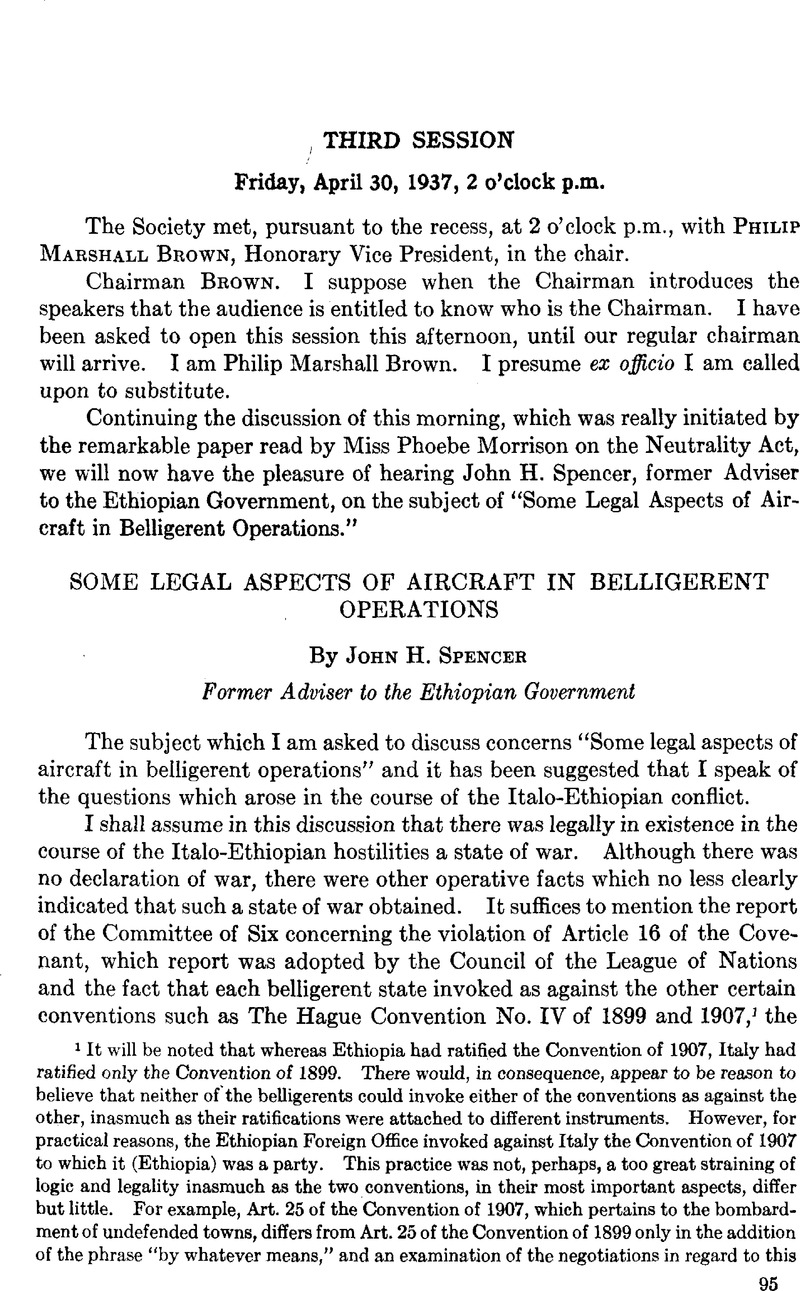No CrossRef data available.
Published online by Cambridge University Press: 27 February 2017

1 It will be noted that whereas Ethiopia had ratified the Convention of 1907, Italy had ratified only the Convention of 1899. There would, in consequence, appear to be reason to believe that neither of the belligerents could invoke either of the conventions as against the other, inasmuch as their ratifications were attached to different instruments. However, for practical reasons, the Ethiopian Foreign Office invoked against Italy the Convention of 1907 to which it (Ethiopia) was a party. This practice was not, perhaps, a too great straining of logic and legality inasmuch as the two conventions, in their most important aspects, differ but little. For example, Art. 25 of the Convention of 1907, which pertains to the bombardment of undefended towns, differs from Art. 25 of the Convention of 1899 only in the addition of the phrase “by whatever means,” and an examination of the negotiations in regard to this insertion leads to the conclusion that such insertion was merely made out of abundance of precaution, it being the view of the delegations that such a phrase was already logically included in the previous version of 1899. Cf. J. B. Scott, ed., Reports to the Hague Conferences of 1899 and 1907 (Washington, 1917), p. 891.
2 This was due (1) to the prohibitions established by Arts. 12–18 and 28 of the Geneva Arms Convention of 1925; (2) to the fact that the Ethiopian Government desisted from purchases in accordance with the appeals of the League of Nations addressed in 1935 to Italy and Ethiopia; (3) to the embargo placed upon the shipment of arms to Italy and Ethiopia prior to the outbreak of hostilities by states members of the League; and (4) (after the outbreak of hostilities) to the lack of funds on the part of the Ethiopian Government. The urgent need of funds for the purchase of fighting planes was one of the principal reasons motivating the requests of the Ethiopian Government for financial aid from the League of Nations.
3 Such were, inter alia, the grounds on which the Italian General Headquarters justified the bombardments of the Swedish Red Cross at Malka Didaka on Dec. 22 and 30, 1935.
4 Cf. Memorandum of March 2, 1936, addressed to the International Committee of the Red Cross and to the League of Nations.
5 See Art. I of the Geneva War Prisoners Convention of 1929. Cf. also, Art. 36 of the draft of the Commission of Jurists (1923)—“When an enemy military aircraft falls into the hands of a belligerent, the members of the crew and the passengers, if any, may be made prisoners of war.” (Italics added.)